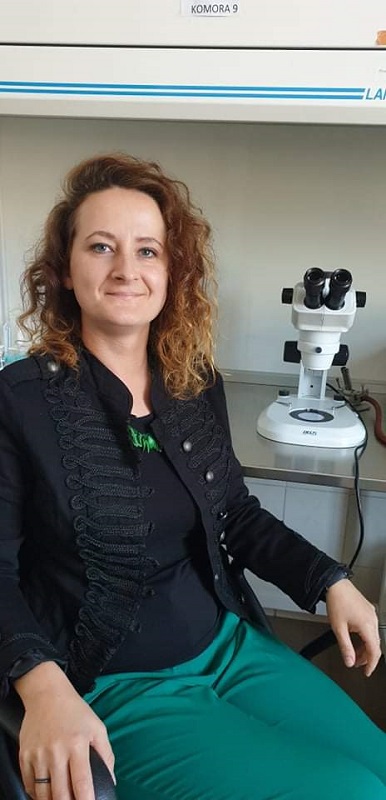RESEARCH EXCELLENCE INITIATIVE
FREEDOM OF RESEARCH – SCIENCE FOR THE FUTURE
“Freedom of research – science for the future” series consists of articles, interviews and short videos presenting research conducted by the winners of “Freedom of research” call for proposals
Katarzyna Nowak, PhD | biologist
In search of mechanisms controlling plant regeneration
| Katarzyna Nowak, PhD|
The genetic basis of the plasticity of plant cells has been intensively studied for years. Understanding the mechanisms controlling plant cell reprogramming will contribute to the development of effective methods of plant regeneration and their genetic modification. The latter is a powerful plant biotechnology tool. Unfortunately, species important from an economic point of view, incl. barley, maize, sorghum and rice are difficult to transform.
The main problem is to obtain cells capable of regeneration and genetic modification at the same time. The appropriate method to carry out this process is somatic embryogenesis – SE. Understanding the mechanisms underlying the regeneration is of particular importance for progress in this field of science. The identification of SE regulators can help to overcome the limitations of using in vitro methods in biotechnology in utility species that are difficult to regenerate.

In my scientific work I combine research on the role of selected miRNA molecules and the transcription factors they regulate – regulatory proteins. I am also analysing the mechanism of action of these proteins on their target genes. As part of the competition titled “Freedom of research” I try to explain the mechanism that controls the reprogramming of somatic cells, demonstrating the role of a small RNA – miRNA172 and a gene regulated by it – AP2, encoding a transcription factor in this process. AP2 plays an important role in the regulation of transcription of a gene that has been known for years and is important for SE. This regulation is based on the removal of acetyl groups from histones, leading to tight chromatin packing, i.e. dependent on deacetylation inhibition of gene expression.
Somatic embryogenesis is a plant specific process of embryos development from somatic cells, i.e. all cells except for generative (germinal) cells, without fertilisation preceding this development. During the SE process, the cell development programme implemented so far is changed and directed to the embryogenic development pathway. It results in the reconstruction of the entire organism from a single cell.
At the heart of this reprogramming is the alteration of hundreds of genes, and is controlled by transcription factors. These proteins have domains that allow them to bind to DNA, thanks to which they influence the expression of the genes they regulate. Transcription factors act as activators, i.e. turn on the transcription of their target genes, or as repressors, inhibiting mRNA synthesis of a given gene.
Negative expression regulation can be accomplished in several ways. One is the interaction of the transcription factor with chromatin modifying proteins such as histone deacetylases (HDACs) Removal of acetyl groups (deacetylation) from histones directly affects the tighter packing of chromatin and reduces the availability of DNA for proteins involved in mRNA synthesis, which in turn leads to inhibition of gene expression.
Research shows that the mechanism of deacetylation dependent silencing of gene expression is very important in the embryogenic transition of somatic cells. The regulation of gene function can also take place after the transcription process. In this way, miRNA (microRNA), by attaching to the transcripts of its target genes, controls the degradation of the mRNA of this gene or inhibits the process of biosynthesis of such a protein.
Analyses of many data confirm that also this level of regulation is very important for changing the development program of a somatic cell. Especially that a significant part of the miRNA in the plant organism regulates the activity of transcription factors. As can be seen, the regulation of gene expression in the course of various developmental processes is an extremely complex and multilevel process that combines many different mechanisms.





